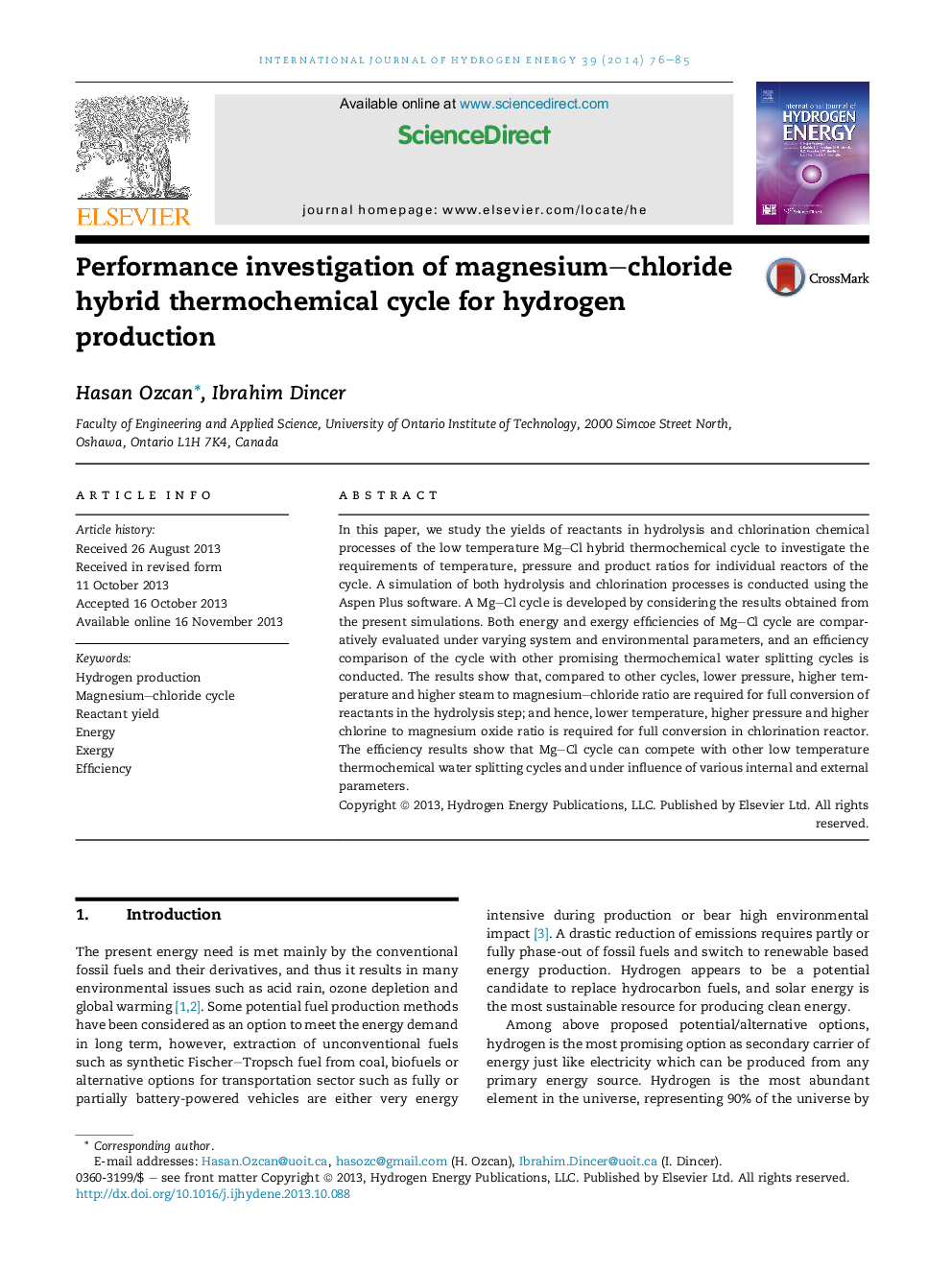| Article ID | Journal | Published Year | Pages | File Type |
|---|---|---|---|---|
| 1273920 | International Journal of Hydrogen Energy | 2014 | 10 Pages |
•Simulations of hydrolysis and chlorination reactors of Mg–Cl cycle are conducted.•Best reactor parameters for a full conversion of reactants are investigated.•A new option of Mg–Cl cycle is developed considering reactor parameters.•An efficiency analysis of the developed option is comparatively performed.
In this paper, we study the yields of reactants in hydrolysis and chlorination chemical processes of the low temperature Mg–Cl hybrid thermochemical cycle to investigate the requirements of temperature, pressure and product ratios for individual reactors of the cycle. A simulation of both hydrolysis and chlorination processes is conducted using the Aspen Plus software. A Mg–Cl cycle is developed by considering the results obtained from the present simulations. Both energy and exergy efficiencies of Mg–Cl cycle are comparatively evaluated under varying system and environmental parameters, and an efficiency comparison of the cycle with other promising thermochemical water splitting cycles is conducted. The results show that, compared to other cycles, lower pressure, higher temperature and higher steam to magnesium–chloride ratio are required for full conversion of reactants in the hydrolysis step; and hence, lower temperature, higher pressure and higher chlorine to magnesium oxide ratio is required for full conversion in chlorination reactor. The efficiency results show that Mg–Cl cycle can compete with other low temperature thermochemical water splitting cycles and under influence of various internal and external parameters.
